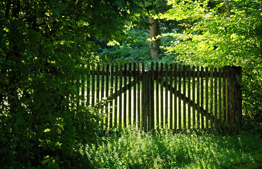Parashat Balak: Bar Kochba “A star rises from Jacob”

Archeological findings indicate that Bar Kochba observed the mitzvot hateluyot ba’aretz and was religious. Rabbi Akiva even believed him to be Moshiach. So why did his revolt fail so miserably? On the purpose of Moshiach and on Bar Kochba’s Beitar.
“דרך כוכב מיעקב וקם שבט מישראל ומחץ פאתי מואב וקרקר כל בני שת”
“A star rises from Jacob, a scepter comes forth from Israel; it smashes the brow of Moav, the foundation of all children of Seth” (Bamidbar 24:17).
“Rabbi Akiva extrapolated from the verse: “A star rises from Jacob” — Kozba rises from Jacob. When Rabbi Akiva would see the son of Kozba, he would say: ‘This is the King Messiah’” (Yerushalmi Ta’anit 4e).
The verse “דרך כוכב מיעקב” in the parasha connects us to the three weeks leading up to the destruction of the Second Temples. Here we will discuss a different destruction that took place 62 years following the Second Temple’s destruction.
Contradictions in Bar Kochba’s Description
In Talmudic sources on Bar Kozba or Bar Koziba (the name “Bar Kochba” does not appear in Talmudic literature) is a figure described on the one hand as enjoying the support of the Torah giant of the generation, Rabbi Akiva, who tied the verse above to his name. On the other hand, Bar Kochba is quoted as telling G-d, as it were, “Don’t help us and don’t hinder us” (Yerushalmi Tana’anit 24a). He is also charged by Chazal with murdering his uncle—Rabi Elazar HaModa’i, whose prayers protected the Jews of the besieged Beitar—by kicking him to death.
In contrast to the Great Rebellion, which was recorded in detail with mostly reliable accounts by Josephus Flavious, one of the top-ranking officials in the rebellion; for nearly 2,000 years the Bar Kochva Revolt was all but unknown. The sparse references in Talmudic literature, which often seem contradictory, indicate that the revolt was led by a person whose first name was unknown; others even doubted his very existence.
The Murabba`at Letters: Bar Kochba’s Religious Observance
Findings in the Wadi Murbba`at in the Judean Desert and elsewhere, from the mid-20th century, drastically changed our understanding of the period. These findings indicate that there indeed was a person named Shimon Ben Kosiba, his last name apparently after the city he lived in in the Judean region. It also seems that he was a very forceful leader (some would call authoritarian), who enforced strict discipline among his lieutenants. He also meticulously observed the laws of Shabbat, the four species, and even the mitzvot tied to the Land of Israel, ensuring that his soldiers observe these laws even during the turbulent times of the revolt and in the years leading up to it. Papyrus 24 from the Murbba`at mentions leasing fields until right before the shemita year (during shemita there is no point in leasing a field, since it is forbidden to work the field). On the same document, at the bottom of each column, it cites four kor (produce unit) of tithes from the produce of the leased property (thank you to Dr. Doron Sar Avi for the reference). That is, they also were also meticulous about tithing. Note that the second year of the revolt was, indeed, a shemita year.
From this we see that Bar Kochba was certainly a religious Jew; he was not a secular leader as he is often portrayed today. If so, we need to understand why he failed. Why did this revolt, in which the Romans suffered heavy losses, not bring the ultimate redemption, as was the hope of Rabbi Akiva and other Torah giants of the time? (See Rambam, Hilchot Melachim 11:3.)
The Goal of Moshiach: Not Only Mitzvah Observance, but Revealing G-d’s Kingship
These archeological findings help us further understand Bar Kochba’s mistake, hinted at by Chazal. Moshiach will not necessarily work miracles, as the Rambam teaches us in Hilchot Melachim, but he certainly is supposed to reveal Hashem’s kingship in the world. If he does not understand this, then he completely misses the point, no matter how meticulous his mitzvah observance is; when Bar Kochba tells G-d not to get involved in battle, he missed a critical point. It’s not only that nothing is possible without G-d’s help; that’s obvious. The issue here is that G-d wants to join our ranks, because that way the Jews’ victory becomes His victory. This is precisely our mission in this world: to reveal G-d’s involvement. A particular war could not become the war of Moshiach if G-d is not involved—this is an oxymoron, since this is the goal of the war.
Challah from Beitar and Beitar’s Destruction
Nechemia of Tekoa brought challah loaves from Bet Tar and they were rejected (Mishnah Challah 4:10).
“… On the Ninth of Av it was decreed that our forefathers would not enter the Land of Israel, and the First and Second Temples were destroyed, Beitar was captured, and it was ploughed over …” (Mishnah Ta’anit 4:8)
Beitar Abroad
These two mentions of Beitar in the Mishnah do not refer to the same place. The Beitar in tractate Challah is outside of the Land of Israel; apparently situated in the Sidon region in Lebanon. Ben Zion Segel maintains that hometown of Nitai of Tekoa (in the Galilee, identified with Khirbet Shema‘, near Meron) was close to this Beitar. However, Beitar is considered outside of Israel, since it is outside the borders of olei Bavel. Since one cannot bring teruma (the same applies for challah) from outside of Israel, the kohanim of Tekoa did not take his challot that he brought from Beitar. In Southern Lebanon, east of Sidon, there is to this day a village called Batir.
Another village by this name was undoubtedly in the Land of Israel, as it is situated several kilometers south of West Jerusalem, at the heart of Judea. Next to the Arab village Batir is a site that the locals call Khirbet al-Yahud (“ruin of the Jews”), situated on the mountainside, surrounded on three sides by the Nahal Refa’im. This site, not thoroughly excavated, is Bar Kochba’s Beitar.
Stages of the Revolt
When analyzing the revolt, one can see that there were three distinct phases. The first phase was that of guerrilla warfare, where Jews fought from within their cities. The second phase relates to the famous hideout caves in the Ben Guvrin area: the Midras ruins, Tel Goded, and the environs. These caves with their hidden passageways ran beneath the Jews' homes. Another secret cave we know about is situated in the Galilee, adjacent to Rumat al-Heib in the Beit Netofa Valley, north of Tzippori. The presence of this cave proved wrong historians who believed that the Galilee did not have a role in the Bar Kochba Revolt. During the stage of guerrilla warfare the Jews had the upper hand while the Romans suffered heavy casualties.
At a certain point, when the Romans began to increase their military pressure, the situation of the rebels worsened in the cities and they fled to the major city of Beitar. At this point, the warfare became conventional, where the strong Roman military had a distinct advantage. Nevertheless, Beitar held out against the siege laid by the Romans for a fairly long time; Chazal explain that this was in the merit of the prayers of Rabbi Eliezer Hamoda'i, who prayed that G-d should not sit, as it were, on His throne of strict justice. Following Rabbi Eliezer Hamoda'i's execution at the hands of Bar Kochba, as a result of the treasonous actions of a Samaritan (Kuti) who was in Bar Kochba's ranks, the Romans succeeded in entering Beitar on 9 Av of 135 CE, where they brutally slaughtered the inhabitants. To the hair-raising accounts recorded in the Talmud of this slaughter, we can add the account of the Roman historian Dio Cassius, who writes that more than 500,000 were slain in Beitar.
At this stage, the destruction of Judea became a hard fact, but the warriors and their families fled and hid out in caves in fear of the Romans. This marks the final stage of the revolt, which lasted up until the winter of 135–136 CE. The caves that served as hideouts to the remnants of the rebels are called the escape caves, as opposed to the hideout caves used in the first stage of the revolt.
Following the revolt's bitter failure, the major center of Jewish activity moved to the Galilee (albeit, we know today that the Jewish settlement in Judea continued to exist for many years to come). This move was part of Sanhedrin's relocation process, Tiberius being the last of the ten cities the Sanhedrin relocated to after being exiled from Jerusalem. The Sanhedrin was finally nullified 300 years later in Tiberius, the city where the Sanhedrin will one day be reinstated.




